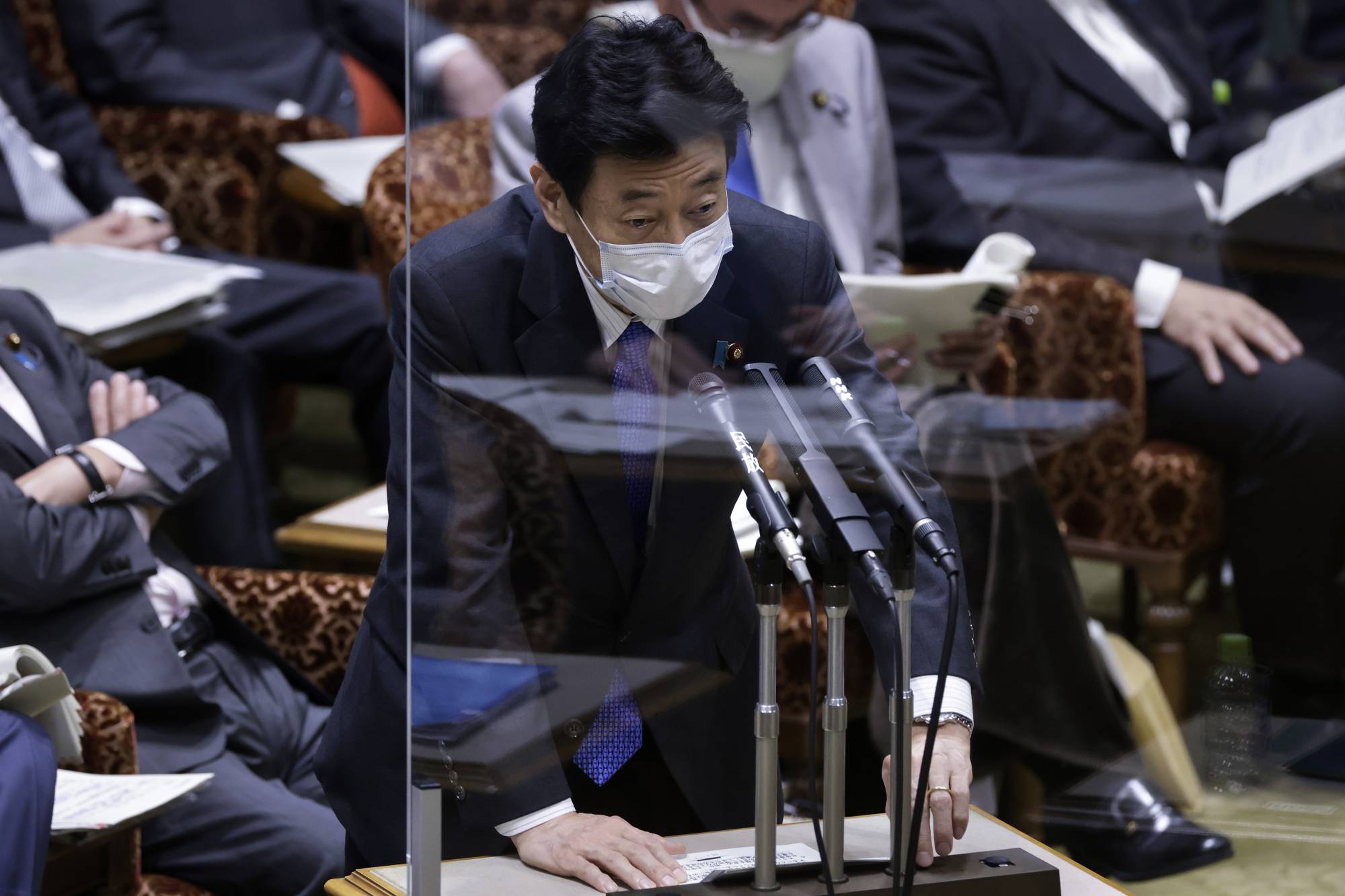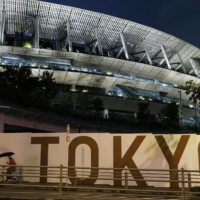Attendance at large events will be capped at 10,000 people or 50% of venue capacity — whichever figure is lower — through August in places where the country’s coronavirus measures have been lifted, the central government announced Wednesday.
Under a state of emergency or quasi-emergency measures, however, event organizers are asked to limit spectators to 5,000 people or less than half the capacity of the venue.
Prime Minister Yoshihide Suga has said he will decide how many domestic spectators are allowed to attend the Tokyo Olympic and Paralympic Games based on the event restrictions set forth under the country’s coronavirus countermeasures.
Wednesday’s announcement — which was made less than five weeks before the opening ceremony of the Olympics on July 23 — effectively determines how many local fans will be able to attend the games in person.
Organizers said they will decide by the end of June exactly how many domestic fans will be allowed during the games, but the announcement Wednesday provided the most definitive indication so far of the size and nature of the global sporting event.
On Thursday, the central government is expected to announce that Sunday will be the last day of the country’s third and ongoing state of emergency — which is currently active in 10 prefectures — but quasi-emergency measures will most likely remain in place in Tokyo and Osaka.
Whether current measures can prevent or contain a rebound in new cases after restrictions are lifted is a major concern. The worst-case scenario would be for infections to spread before and during the Tokyo Games, triggering a superspreader event that disperses deadlier COVID-19 variants nationwide and abroad.
Although foreign spectators were barred earlier this year, the extent to which domestic fans will be allowed to attend has been a central issue ever since the games were postponed in March 2020.
“New cases are gradually declining in most parts of the country, but public traffic is increasing,” said Yasutoshi Nishimura, the Cabinet minister leading the country’s coronavirus response, during a meeting Wednesday. “Preventing a large rebound is crucial.”

But infectious disease experts warned the same day that allowing domestic spectators will lead to a spike in cases.
Tokyo could see 10,000 additional cases of COVID-19 if the games are held with spectators — as opposed to holding them with none — even if the highly contagious delta variant has a limited impact, according to projections by Kyoto University and the National Institute of Infectious Diseases. The experts also cautioned health ministry officials that another state of emergency may be necessary in the capital while the games are underway.
The Tokyo Organising Committee, meanwhile, on Friday released a report that predicted seven infections will be confirmed each day among the roughly 77,000 athletes and other personnel during the games. Those calculations do not, however, account for volunteers, domestic spectators or unpaid medical staff.
While the question of domestic attendance has been a fundamental — and equally controversial — dilemma for organizers, so too has been the effectiveness with which they can prevent or track infections among the tens of thousands of Olympic and Paralympic athletes, coaches, staff, volunteers, VIPs and media personnel.
GPS tracking and deterrents — warnings, fines or removal from the games — seem to be their answer.
The International Olympic Committee (IOC) and the Tokyo Organising Committee on Tuesday evening released the third draft of the playbook, a guide to the individual restrictions and coronavirus measures to which participants in the Tokyo Games will be subjected leading up to and during their stay in Japan.
Organizers estimate that up to 93,000 people — including 15,400 Olympic and Paralympic athletes — will travel to Tokyo during the games.
Athletes will need to be tested twice for the coronavirus before boarding a flight to Japan, be tested daily following their arrival, submit a detailed itinerary of their daily activities, agree to have their location monitored via GPS and, among other things, sign a waiver in case they become infected or lose their life to COVID-19.
Organizers have said failure to comply — not just for athletes but all personnel — could result in a disciplinary warning, temporary or permanent expulsion, monetary fines or the withdrawal of media accreditation for members of the press.
“The playbooks are there to be followed,” IOC Olympic Games Executive Director Christophe Dubi said during a joint news conference Tuesday evening. “No transgressions.”
The first version of the playbook was released in February, followed by an updated version in April. While the version released Tuesday had been touted as the third and final edition, organizers said revisions and additions will be made if and when necessary in the coming weeks.
As the opening ceremony draws closer, the country’s initially sluggish vaccine rollout is gradually picking up speed, though it remains the slowest among industrialized nations.
Nishimura said that, as of Monday, roughly 25 million people — or about 15% of the population — had received their first dose of a vaccine.
The IOC has said around 80% of athletes will be vaccinated by the time they arrive in Japan, and vaccines will be provided to those who haven’t been inoculated thanks to an agreement the athletic body made earlier this year with American pharmaceutical manufacturer Pfizer Inc.
The Tokyo Organising Committee announced Monday that it will provide vaccines for all domestic journalists planning to cover the games.
In a time of both misinformation and too much information, quality journalism is more crucial than ever.
By subscribing, you can help us get the story right.
SUBSCRIBE NOW




